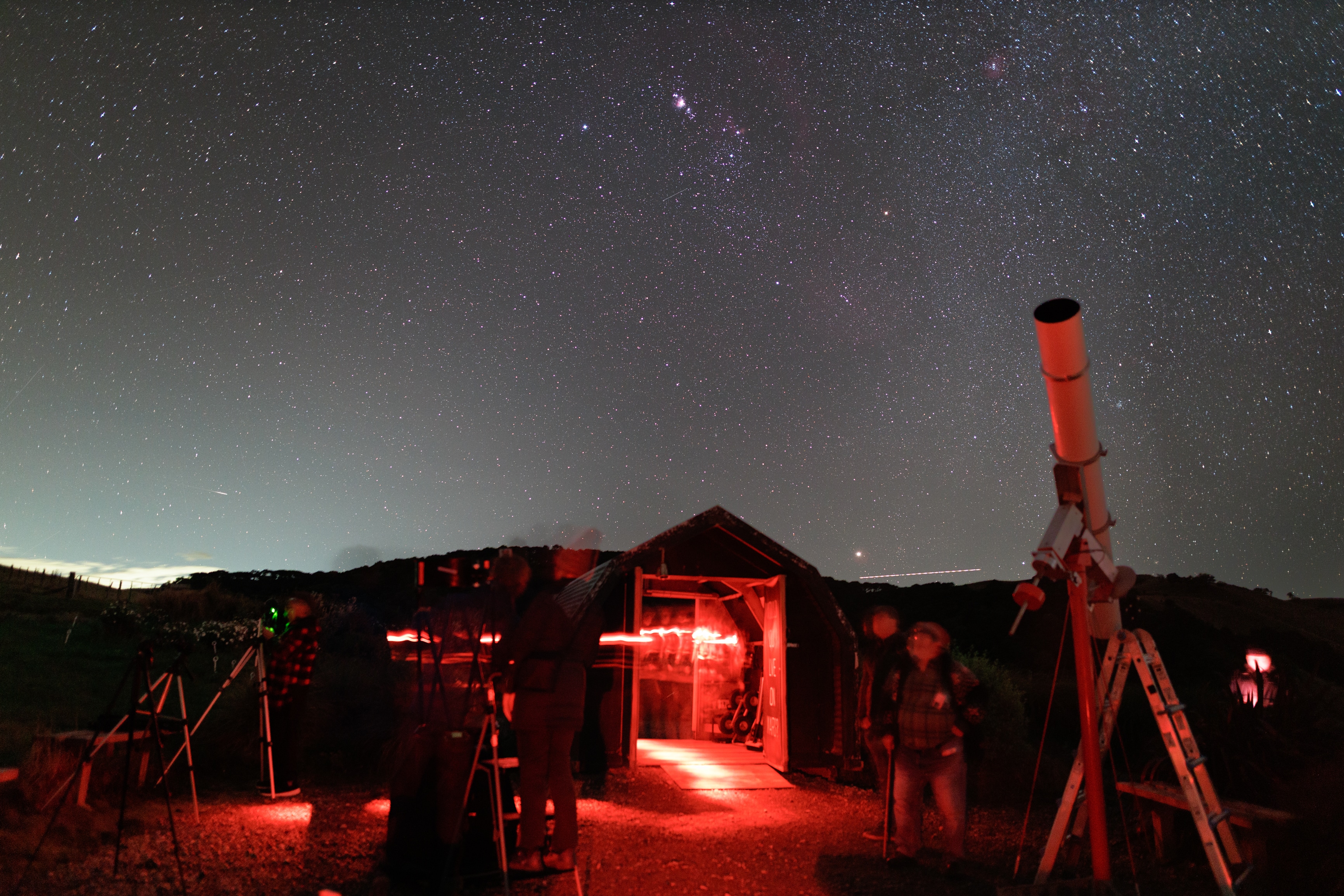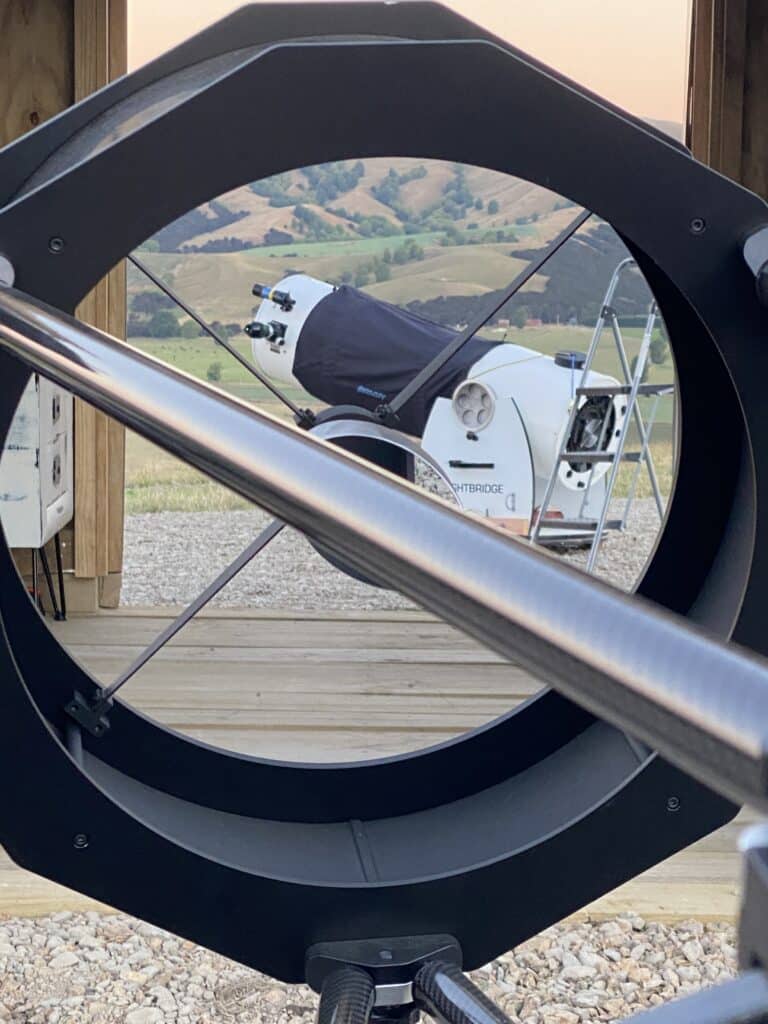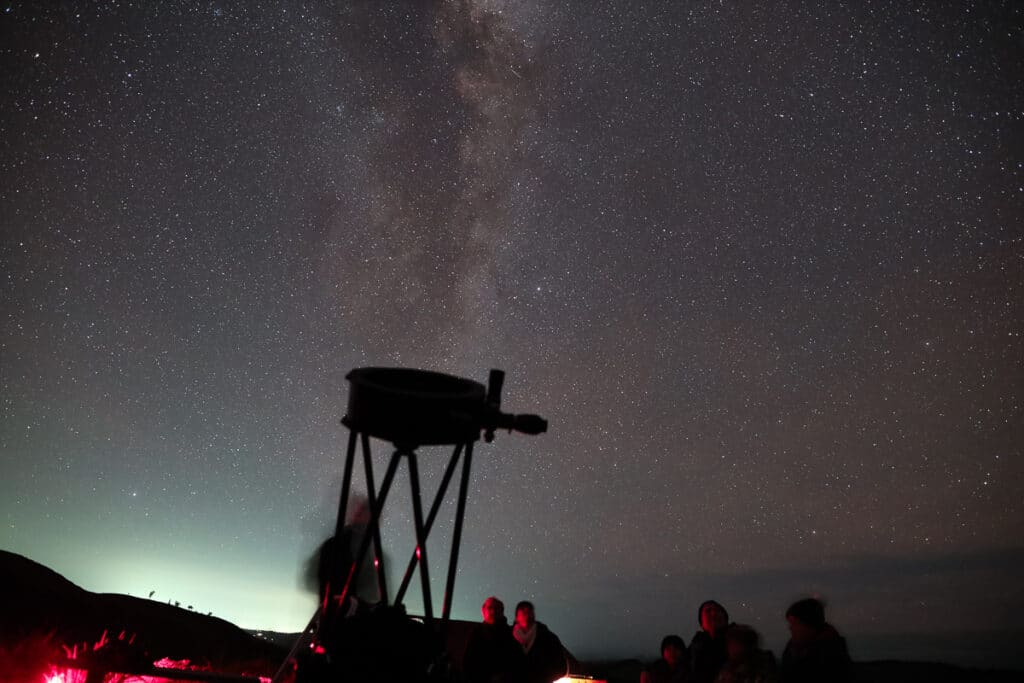for your inspiration
Stargazing in Wairarapa — Star Safari Observatory
A Top Global Night-Sky Experience
Wairarapa’s night sky has just been named one of the world’s top stargazing experiences in Lonely Planet’s Best in Travel 2026.
At Star Safari, a solar-powered observatory in the Wairarapa Dark Sky Reserve, you can experience that same award-winning sky through some of the largest telescopes open to the public in New Zealand.
Learn about the night sky, outside

What happens during a stargazing session?
Welcome & Orientation
Guests arrive at our hill-top carpark near Martinborough, where the team greets everyone personally.
The Space Shed
Inside our cosy, solar-powered Space Shed, we start with a short introduction, talk about what’s in the sky that night, and help your eyes begin adjusting to the dark.
The Moon Garden path
A trail winds through our Moon Garden, planted with white and silver flowers that glow under moonlight. Most nights it’s pitch-black — your eyes slowly adapt, the scent of flowers drifts past, and the stars begin to appear.
On the Stargazing Platform
We gather by the telescopes for a quick safety chat.
Through the telescopes
Meet our three main instruments: Darth Vader (black 16″), Princess Leia (white 16″), and an elegant 8″ – The Paul Mallinson Refractor. Together they reveal craters on the Moon, Saturn’s rings, Jupiter’s moons, clusters and distant nebulae glowing millions of light-years away.
Farewell under the stars
Before leaving, guests take one last look up — eyes now fully dark-adapted, the sky brighter than they saw it when they arrived.
Regrouping and debriefing the night
We then return to the space shed, where we debrief the evening over a hot drink—traditionally hot chocolate (or a selection of teas).
size does matter

Our two reflector telescopes, Princess Leia and Darth Vader, are 16″ in diameter. They are the largest telescopes for public viewing in Wairarapa.
Look at the stars through the best telescope equipment for public viewing in Wairarapa
We use top of the range equipment for our customers – our telescopes are high quality large instruments.
This means we can see a huge range of objects in the night sky: star clusters, galaxies and nebulae.

your experience with the night sky
What do you see when you look at the night sky?
Look up to the stars from anywhere else in the world, and you’re looking back in time.
So, when we venture beyond Earth as we stargaze into the cosmos, we use telescopes, binoculars, and our eyes to see stars, figure out constellations, look at planets, the Moon, and beautiful gas clouds called nebulae.
Sometimes, we also see galaxies, comets, occasionally a quasar and, most of our nights out, we definitely spot a few meteors.
And as you gaze upward, we’ll share how humans — from Māori navigators to modern explorers — have always found their way by the stars. You will find a little bit of everything here, from science to stories to local connections.
We love talking about all these things, what they are, how they got there, and how they work. Between the two of us, an astrobiologist and an astrophysicist, and our fabulous team, we have science communication covered. So bring plenty of questions.
Sam wrote a great blog article here, which gives examples of what we would observe at our stargazing sessions and why we chose to operate manual telescopes.
your instructors are
Haritina Mogoșanu
Samuel Leske
Both of us have been stargazing for more than 20 years, created exhibitions, outreach events, talked to tens of thousands of students, teachers and visitors, and even created a proof of concept space science centre in Carterton.
And our fantastic team
Donna Herrick
Alison Jarden
Alexis Dunkin
We all look forward to seeing you at Star Safari!

